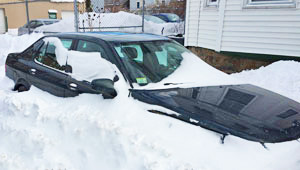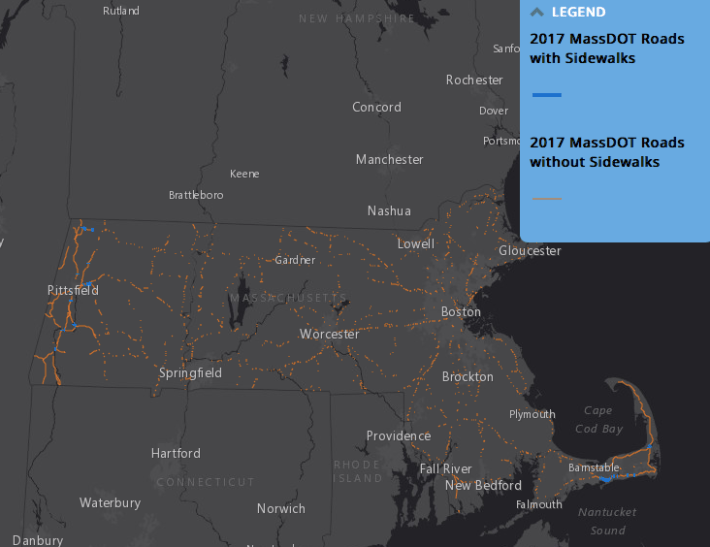It's one small step for Massachusetts, but one giant leap for pedestrians.
The Bay State's historically car-focused Department of Transportation will "encourage and facilitate safe pedestrian travel" with new street designs that favor walkers — and, perhaps most important, finally plowing the damn sidewalk after snowstorms!
A draft plan released this week says the state will review the 1,100 miles of sidewalks currently under its jurisdiction — and areas with high pedestrian crash rates, those in critical transit connections and those in low-income neighborhoods will be considered for "design features, including traffic calming, road diets, mid-block crossings, and safety countermeasures."

"This plan defines a vision for Massachusetts in which all people have a safe and comfortable walking option for short trips," state DOT commissioner Stephanie Pollack said. "When pedestrian facilities, including sidewalks, ramps, and crosswalks, are absent ... or unsafe, it encourages trips in cars that could reasonably be made on foot."
No small matter: the plan also proposes making the state DOT responsible for clearing snow from sidewalks under its control — which is quite a promise in a state that spent $154 million in 2015 to clear snow from roadways, but mostly left pedestrians to fend for themselves.
The plan also calls for "new guidelines" to maintain pedestrian access during construction projects and thousands of more curb ramps for those in wheelchairs.
Also, the state will do a better job of tracking pedestrians so that they are no longer undercounted in transportation analyses. States often divert more resources towards drivers because their cars are easier to track, but the Massachusetts plan calls for new automatic counters at some key biking and walking locations around the state. With better numbers, localities can make a stronger case for pedestrian infrastructure investments.

It's unclear how much of Pollack's $1.9-billion annual budget will be set aside for such improvements, but Massachusetts has already made a significant investment in pedestrian infrastructure, creating a $1 billion fund to reimburse cities and towns that do projects with multi-modal elements between 2019 and 2023.
The draft plan is open for public comments through Oct. 17.






